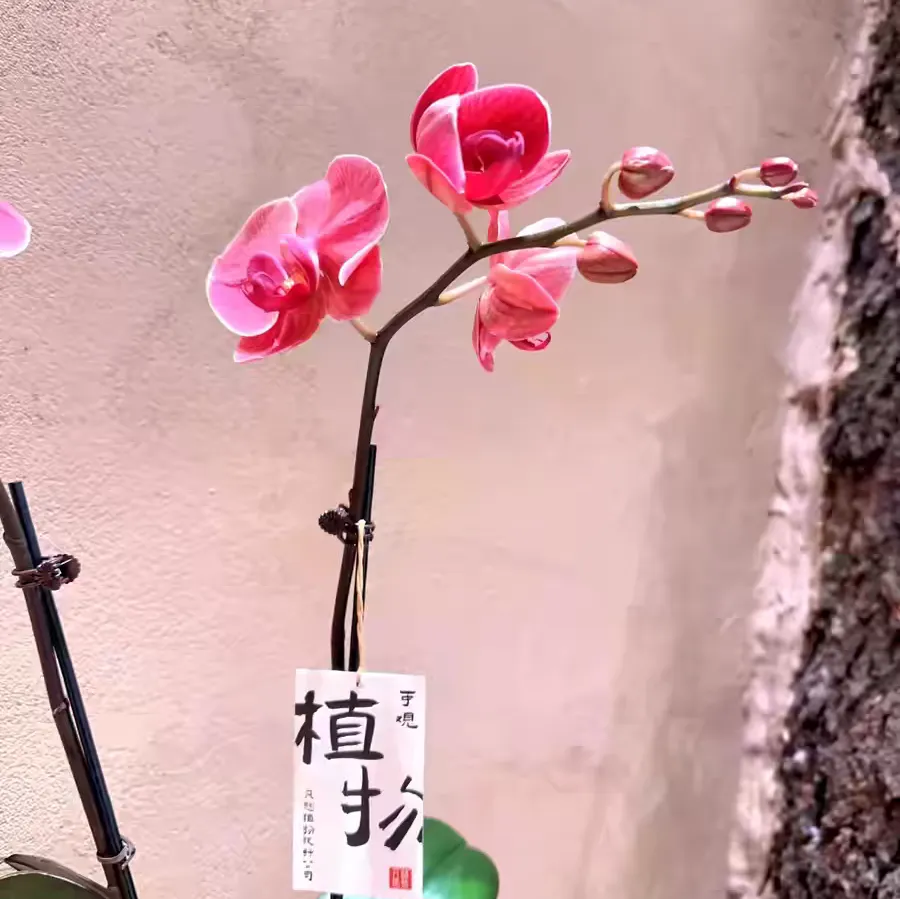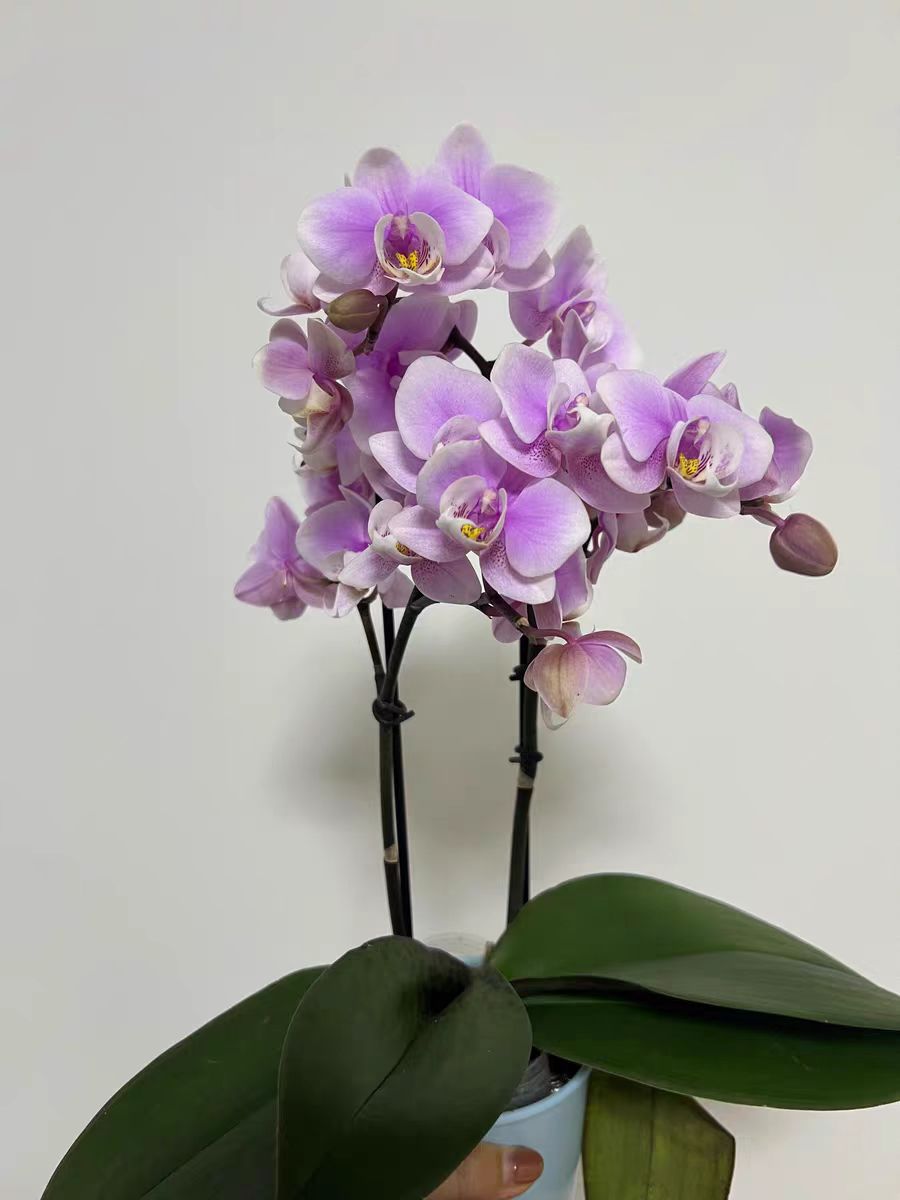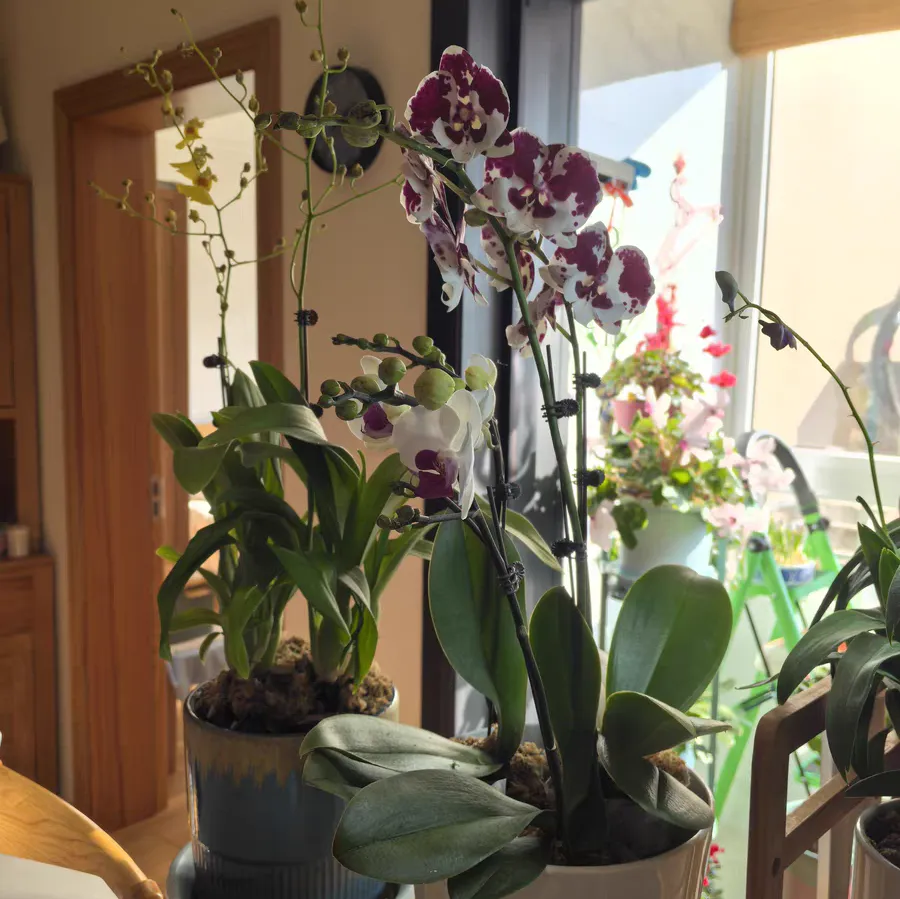Friends who grow Phalaenopsis must have had such a doubt: When you see the flower spikes emerging from your Phalaenopsis and are full of joy, looking forward to its blooming, you suddenly start to hesitate. Can you repot it at this time? Let's talk about it in detail today.
When Phalaenopsis grows flower spikes, it means that it is in a crucial period of reproductive growth, concentrating all its energy on growing the flower spikes and differentiating flower buds to produce beautiful flowers. At this time, the plant is relatively fragile and particularly sensitive to changes in the surrounding environment. If you want to repot it, you definitely have to move its roots. The root system is an important organ for plants to absorb water and nutrients. If the roots are injured, it will be difficult for the plant to "eat well", and it won't be able to absorb enough water and nutrients. So, what can it use to supply the blooming? Therefore, from the perspective of the growth stage of Phalaenopsis, repotting when it is growing flower spikes is really a bit risky.
Let's talk about the situation after repotting. After changing to a new pot, the Phalaenopsis has to adapt to the new environment again. During this adaptation period, the roots of the Phalaenopsis are busy taking root in the new soil, and its growth rate will slow down or even temporarily stop. If you repot it when it is growing flower spikes, the Phalaenopsis in the adaptation period may not be able to supply sufficient nutrients to the flower spikes in time. As a result, the flower spikes may not grow well, becoming small, with fewer flowers blooming, and the flower buds may even fall off, which will greatly affect the appearance.
However, it's not that it can never be repotted. If the original flower pot is pitifully small, with the roots all tangled up and no room for growth, or if the soil is full of hard lumps, neither breathable nor drainable, seriously threatening the survival of the Phalaenopsis, then even if it has grown flower spikes, you have to repot it. But be extremely careful when repotting! Find a new pot with good air permeability and the right size, and use materials like sphagnum moss that are loose and have good drainage. When taking the plant out of the pot, be gentle. Never pull the roots hard and try to minimize damage to the roots. After repotting, place the Phalaenopsis in a warm, well - ventilated place with bright light but no direct sunlight, and maintain a certain humidity to help it regain its vitality quickly.
In summary, when Phalaenopsis is growing flower spikes, it's best not to repot it if possible, otherwise it is likely to affect the blooming. But if you have to repot it, spend more time and do every step well to ensure that the Phalaenopsis can bloom smoothly.
Can Phalaenopsis be repotted when it is growing flower spikes?

Share with
Tagged in :




Leave a Reply